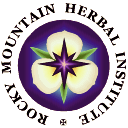 |
|
— updated 2023-03-08

|
Herbalists' BootCamp
Tutorial #6-supplement:
CaseQuery symptom modifiers explained, with examples
by Roger W. Wicke, Ph.D.
These BootCamp tutorials will help you get started using the HerbalThink-TCM software, ensure it is installed correctly, demonstrate how to use important features and modules, and teach you basic principles of Chinese herbology that you can begin applying practically. Successful completion of this series is required for admission to the RMHInet brainstorming network and to our professional courses.
Copyright ©2016-2019 by RMH-Publications Trust; all rights reserved.
|
Subtopics on this page…
Tutorial #6-supplement: CaseQuery symptom modifiers explained, with examples
To accurately transcribe most symptom complaints into CaseQuery format simply requires adding the appropriate modifiers, as in the following examples:
Symptom complaint: chronic, severe bouts of sneezing in late springtime (pollen allergies), which are aggravated soon after eating
Encoded format: [DISCHsinus_1_sneezing=MAG_0_severe] @[AAC_1_chronic] @[AAR_1_aggrAfterEating] @[ATY_1_lateSpring]
Explanation: Environmental and dietary factors (e.g.: "pollen allergies") that may aggravate or relieve a symptom are important to note, but are too numerous to have included in the CaseQuery questionnaire. You should enter this information as a user comment in the 'MISC' tab under 'Misc. comments'.
|
Symptom complaint: chronic shortness of breath, aggravated by exertion/exercise
Encoded format: [RESP_1_shortOfBreath] @[AAC_1_chronic] @[AAR_1_aggrByExertion]
|
Occasionally, an individual will specify in great detail the circumstances in which a symptom will become more severe. This usually that signifies that this symptom complaint is especially important. To accurately encode the symptom information may require more than one line, as in the examples below. (Note: you will need to learn how to use the symptom-modifiers tab ('12-SSmod') and the various 'Edit' menu options. Be sure to read 'Instructions for @MODIFIERS' within the '12-SSmod' section. See especially "Creating and modifying duplicate lines".)
Symptom complaint: chronic bouts of sneezing generally (throughout the year), but especially in late springtime (pollen allergies)
Encoded format:
Line 1: [DISCHsinus_1_sneezing] @[AAC_1_chronic]
Line 2: [DISCHsinus_1_sneezing=MAG_0_severe] @[AAC_1_chronic] @[ATY_1_lateSpring]
Explanation: On line 1, it is not necessary to specify each season of the year explicitly; if this modifier is absent, "all year" is implied. (To a considerable degree, the AutoSage-TCM system applies "fuzzy logic" to the input to allow for the inherent flexibility and ambiguities of human language.)
|
Symptom complaint: acute (onset within past few weeks) itching of skin over whole body, but especially in head, neck, and shoulders
Encoded format:
Line 1: [PAIN_1_itching=MAG_0_mild] @[AAC_1_acute]
Line 2: [PAIN_1_itching=MAG_0_severe] @[AAC_1_acute] @[ALO_1_head, ALO_1_shoulders, ALO_1_posteriorNeck]
Explanation: On line 1, it is not necessary to specify "whole body"; in the absence of a body-location modifier, this is implied.
|
Symptom complaint: chronic soreness and aching of muscles generally (whole body), but especially of shoulders, lower back, and hips; the lower back and hip pain is relieved by exercise and movement
Encoded format:
Line 1: [PAIN_1_soreAche==MAG_0_mild] @[AAC_1_chronic] @[ALD_1_musclesAndTendons]
Line 2: [PAIN_1_soreAche=MAG_0_severe] @[AAC_1_chronic] @[ALD_1_musclesAndTendons] @[ALO_1_shoulders]
Line 3: [PAIN_1_soreAche=MAG_0_severe] @[AAC_1_chronic] @[AAR_1_rlvdByExertion] @[ALD_1_musclesAndTendons] @[ALO_1_backLumbosacral, ALO_1_hips]
Explanation: We need 3 lines here, because only the lower back and hip pain is specifically relieved by exertion, but not the shoulder pain.
|
Go back to Tutorial #6: CaseQuery

|


